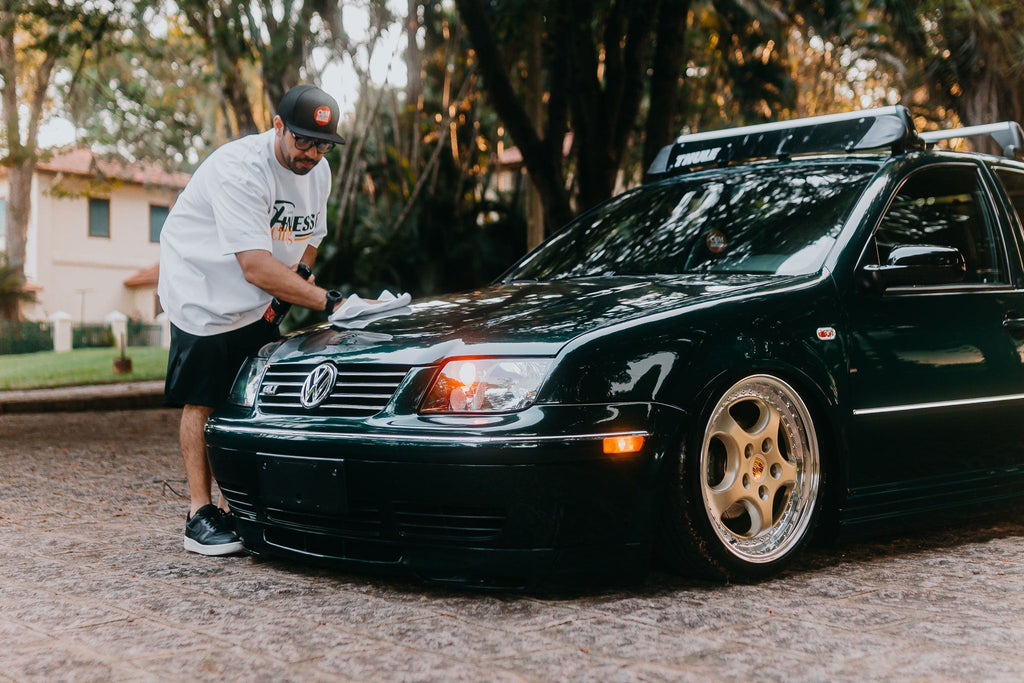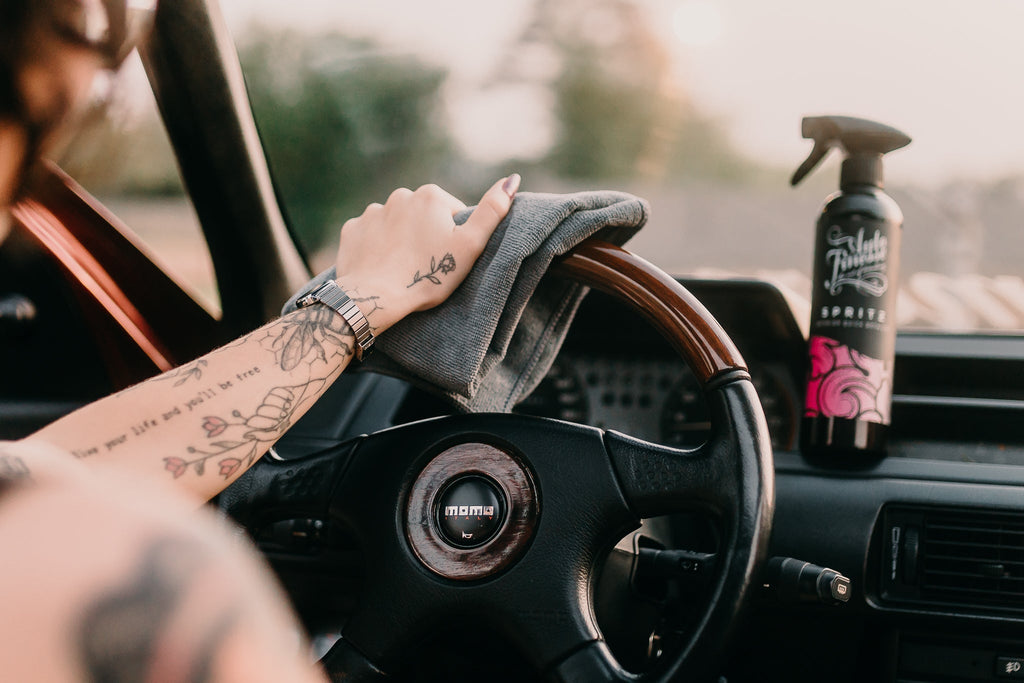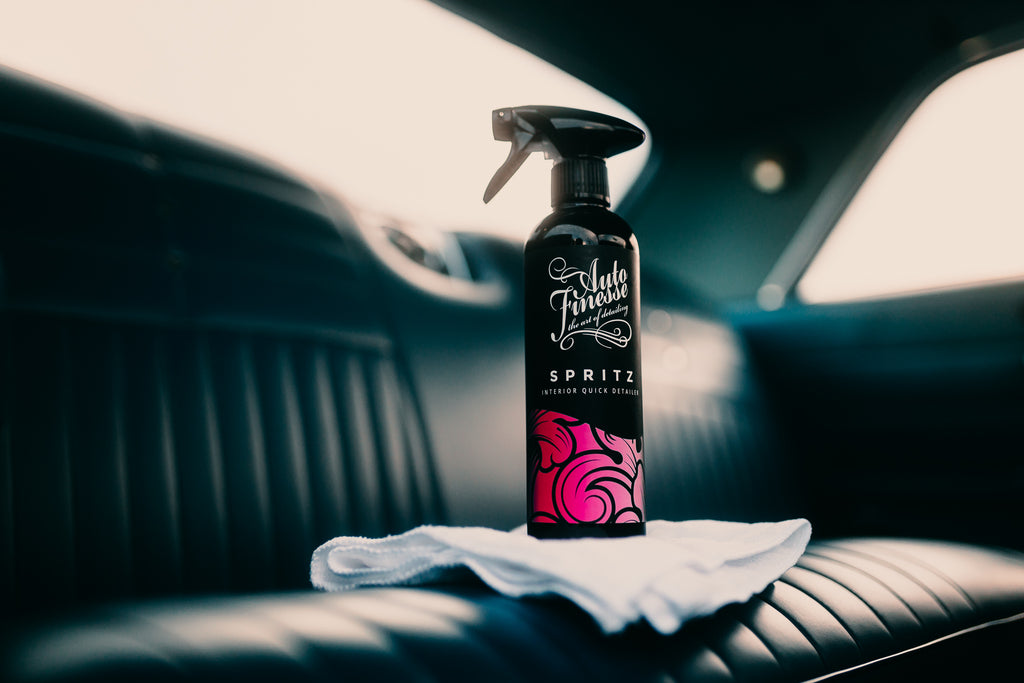New Car Treatment
When a brand-new car joins our fleet, the first step we take is a thorough new car preparation. Here's a guide to that process.
If you've ever gotten a new car, you're probably familiar with the initial excitement, often followed by a bit of disappointment. The paintwork and overall finish usually aren’t as flawless as you'd hoped or expected. It's no secret that many new cars arrive in what most of us would consider subpar condition. Now, to be fair, not all brands and dealerships are the same—some stand out for delivering cars in the pristine condition you'd expect. However, for the most part, the mass production of vehicles and the fast-paced nature of mainstream dealerships mean your new car often doesn’t receive the care and attention you would give it yourself.
Here's the deal when ordering your new car: just ask them not to prep it at all. Don’t even let them wash it. If possible, try to take it home with all the protective coverings still intact (though we understand that's not always feasible).
The issue with this BMW 3 Series is that it was a pre-registered car, sitting at the dealership for 4-6 months. During that time, it went through a few quick washes and the occasional forecourt wipe-down. That said, we got a great deal on it, and honestly, if it had arrived in perfect condition, we wouldn’t have much to show you!
We collected the car with just 200 delivery miles on the clock. The first order of business was to swap out the wheels and install a new set of adjustable Bilstein suspension.





We start the process with the wash stage, and it's important to note that a pre-detail wash differs from a standard maintenance wash.
Beginning with the wheels, we thoroughly coat the wheel face, barrel, callipers, and tyres with Imperial wheel cleaner.
A selection of brushes, woolly tools, and a microfibre mitt ensures every part of each wheel is reached. Allow the cleaner to dwell for a minute, then rinse off with a jet wash.



Repeat this process for each wheel individually. It's also important to mention that we clean the tyre walls during this step as well.




With the wheels taken care of, we move on to washing the rest of the exterior. We start by applying our Citrus Power pre-cleaner to the dirtier areas, such as the lower sills, wheel arches, and front and rear sections. This loosens the larger particles and grime before jet washing, helping to remove as much debris as possible from the bodywork.




Before moving on to the contact wash, there's an essential step to remove as much dirt and road grime as possible. This is crucial since most paintwork swirls and scratches happen during the wash stage. Using Snow Foam helps break down an additional 50-90% of the grime on the vehicle. We apply it from top to bottom and let it dwell for as long as possible, rinsing it off before it starts to dry. During this time, we also focus on intricate areas like grilles and panel gaps, using specialised brushes for thorough cleaning.






With the vehicle nearly clean from the earlier stages, we proceed to the contact wash. Using the two-bucket method, fill both buckets with fresh water, then add our Lather shampoo to just one of them.
Using a lambswool wash mitt, we apply fresh shampoo to the bodywork, starting from the top of the vehicle and working our way down. Focus on small sections at a time, rinsing any dirt from the mitt in the fresh water before dipping it back into the shampoo bucket. This ensures that you’re always using clean shampoo on the vehicle. Follow this sequence: roof, bonnet, upper wings, upper sides/doors, quarters, front bumper, and rear. Once finished with the upper areas, switch to a microfibre mitt reserved for the lower and dirtier sections of the vehicle to minimise contamination during future washes. Finally, rinse the entire vehicle thoroughly.



With the car still wet from the wash and all soap residue thoroughly rinsed away, we focus on eliminating any bonded contamination from the paintwork. Begin by spraying the entire vehicle with our Iron Out iron contamination remover, which effectively dissolves any ferrous contaminants present. It’s preferable to dissolve these contaminants rather than remove them with a clay bar, as they are some of the sharpest types of contaminants found on a vehicle. Using a clay bar on these can drag the sharp particles across the paint, resulting in fine scratches known as marring. Once the car is evenly coated, pay special attention to the upward-facing panels on the rear and sides. A helpful tip is to gently agitate Iron Out in these areas using a microfibre or foam applicator.


Next, we turn to ObliTARate to dissolve another common contaminant adhering to our vehicle’s paintwork: tar. This substance is typically found along the lower areas and behind the wheels. Simply spray ObliTARate tar and grime remover onto the lower half of the car and allow it to dwell for a couple of minutes. Then, wipe it away with a microfibre towel for effective removal.

Next, we rinse and rewash the areas that have been treated with the tar remover to prevent it from interfering with or dissolving the clay bar in the next stage.


This brings us to the final stage of decontamination: the mechanical process using a clay bar. Claying your paintwork is an essential part of the detailing preparation, and it’s crucial to execute this step carefully.
Using ample clay bar lubricant, work in straight lines over small sections approximately 400mm x 400mm, following the same order as the wash stage: starting with the upper surfaces, then the top sides, front bumper, rear, and lower sides.


We promptly perform a final rinse to remove the clay lubricant, followed by thoroughly drying the vehicle, including gaps, grilles, and door jambs.


Once the wet work is complete, we bring the car into the detailer's den—a storage barn where we can focus on detailing without distraction. We begin by taping off any sensitive areas that we want to protect from polish, including trim, rubber, and other exposed components.

Now it’s time to polish the paint. Our vehicle has numerous light defects—though not particularly deep—which is why we’ve chosen to use our Revitalise No. 2 along with the appropriate pad. We work on sections about 400mm x 400mm, making overlapping slow passes. We start at speed 1 to spread the polish, then increase to speeds 4-5 to effectively work the polish in and break it down, finishing with a slow pass at speed 1.
Next, we use our Revitalise No. 3 with a red finishing pad to further refine the vehicle's surface.




With the paint now looking pristine, we begin to apply a layer of protection. For this metallic-finish car, we’ve chosen a gem from our range that’s often overlooked: Spirit. Our Spirit wax is specifically formulated to enhance metallic flakes and offers excellent durability for everyday use.

Conclude by attending to the finer details, including dressing the grills, trims, and tyres, as well as ensuring the glass is spotless.





All that's left now is to take it outside and admire the stunning finish...




And there you have it—a new car that now looks as it should right off the dealership floor. It’s also fully protected, ensuring that a careful wash will easily restore it to this condition.
We hope you found this guide to detailing a new car helpful. If you have any questions about the techniques or products used in this process, please don’t hesitate to reach out to us for more information.





